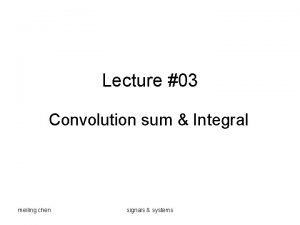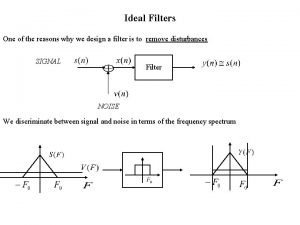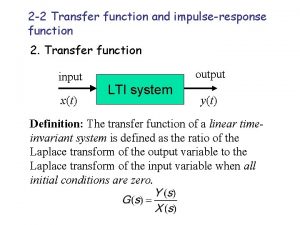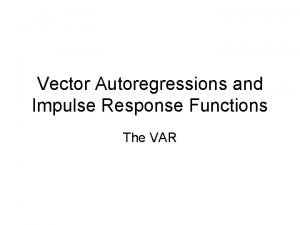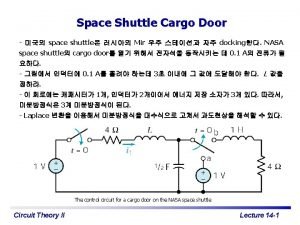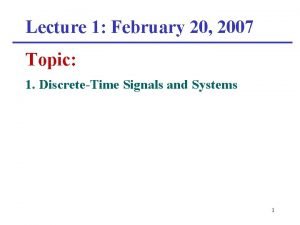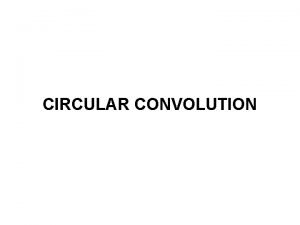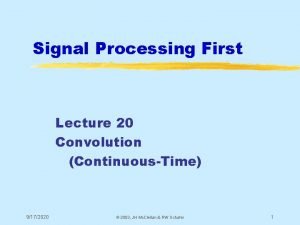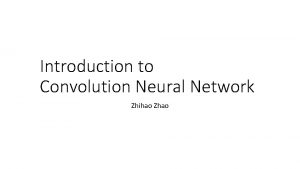ContinuousTime Convolution Impulse Response Impulse response of a








- Slides: 8

Continuous-Time Convolution

Impulse Response • Impulse response of a system is response of the system to an input that is a unit impulse (i. e. , a Dirac delta functional in continuous time) • When initial conditions are zero, this differential equation is LTI and system has impulse response 2

System Response x(t) • Signals as sum of impulses t Dt t=n. Dt • But we know how to calculate the impulse response ( h(t) ) of a system expressed as a differential equation • Therefore, we know how to calculate the system output for any input, x(t) 3

Graphical Convolution Methods • From the convolution integral, convolution is equivalent to – Rotating one of the functions about the y axis – Shifting it by t – Multiplying this flipped, shifted function with the other function – Calculating the area under this product – Assigning this value to f 1(t) * f 2(t) at t 4

Graphical Convolution Example • Convolve the following two functions: f(t) g(t) 3 2 * t t 2 -2 2 • Replace t with t in f(t) and g(t) • Choose to flip and slide g(t) since it is simpler and symmetric 3 g(t-t) • Functions overlap like this: 2 f(t) -2 + t t 2+t 2 t 5

Graphical Convolution Example • Convolution can be divided into 5 parts I. t < -2 • • Two functions do not overlap Area under the product of the functions is zero 3 2 -2 + t • • f(t) 3 Part of g(t) overlaps part of f(t) Area under the product of the functions is t 2 2+t -2 t < 0 II. g(t-t) 2 -2 + t f(t) 2+t t 2 6

Graphical Convolution Example III. 0 t < 2 • • Here, g(t) completely overlaps f(t) Area under the product is just 3 2 f(t) 2 2+t -2 + t IV. 2 t < 4 • • Part of g(t) and f(t) overlap Calculated similarly to -2 t < 0 t 4 V. • • g(t) and f(t) do not overlap Area under their product is zero g(t-t) t 3 g(t-t) 2 f(t) -2 + t 2+t 7

Graphical Convolution Example • Result of convolution (5 intervals of interest): y(t) 6 t -2 0 2 4 8
